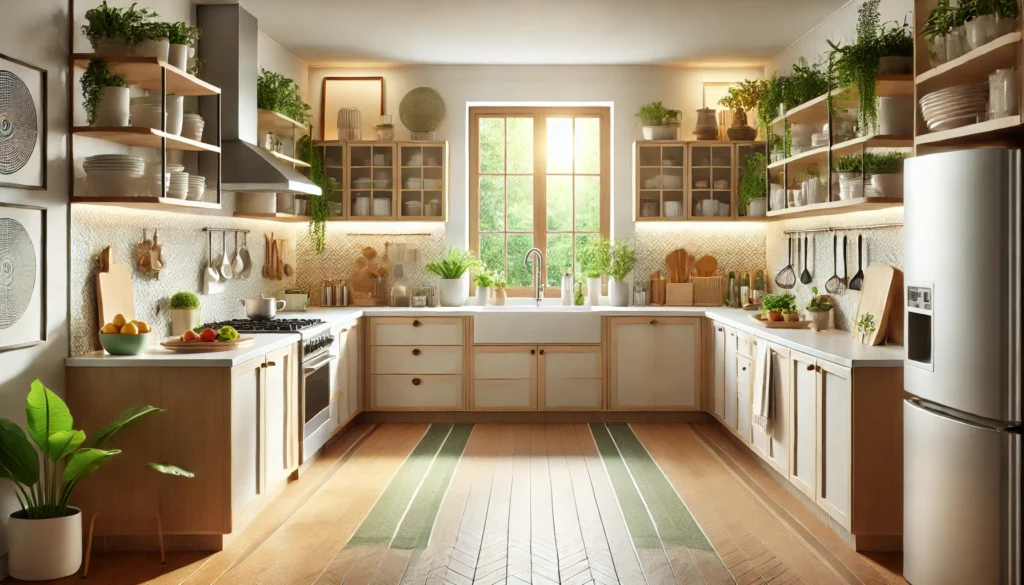In Feng Shui, the kitchen is considered one of the most important spaces in your home, representing health, prosperity, and nourishment. A kitchen’s layout and design can influence the flow of energy (Chi) throughout your home, and with the right placement and organization, you can create a balanced and harmonious environment. Feng Shui principles for the kitchen focus on the correct positioning of key elements like the stove, sink, and refrigerator, as well as the overall energy flow. In this article, we will explore the fundamental concepts of creating a Feng Shui kitchen layout to support health and prosperity in your household.
1. Position of the Stove: The Heart of the Kitchen
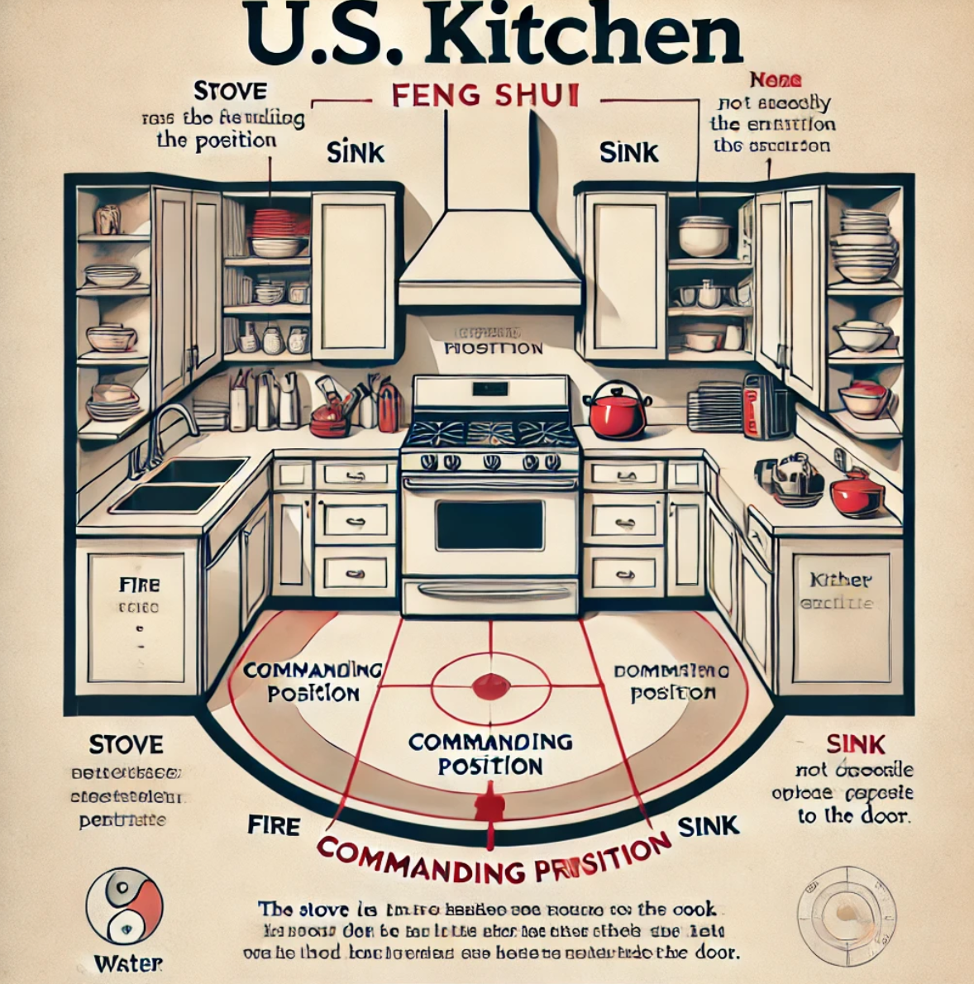
In Feng Shui, the stove is one of the most significant elements in the kitchen because it represents the fire element and is directly linked to wealth and nourishment. Ideally, the stove should be placed in the “commanding position,” meaning the cook should be able to see the entrance to the kitchen while using it, without standing with their back to the door. This positioning allows the cook to feel in control, aware of the environment, and better connected to the energy of the kitchen.
If it’s impossible to move the stove, placing a small mirror or reflective surface behind it can symbolically reflect the door, ensuring that the cook is still “commanding” the space.
Key Tips:
- Position the stove so that the cook can see the kitchen entrance while cooking.
- Avoid placing the stove directly next to or opposite the sink, as water (sink) and fire (stove) are opposing elements in Feng Shui and can create conflict.
- Keep the stove clean and in good working condition to ensure the flow of positive energy and to symbolize abundance.
2. Balancing Fire and Water Elements
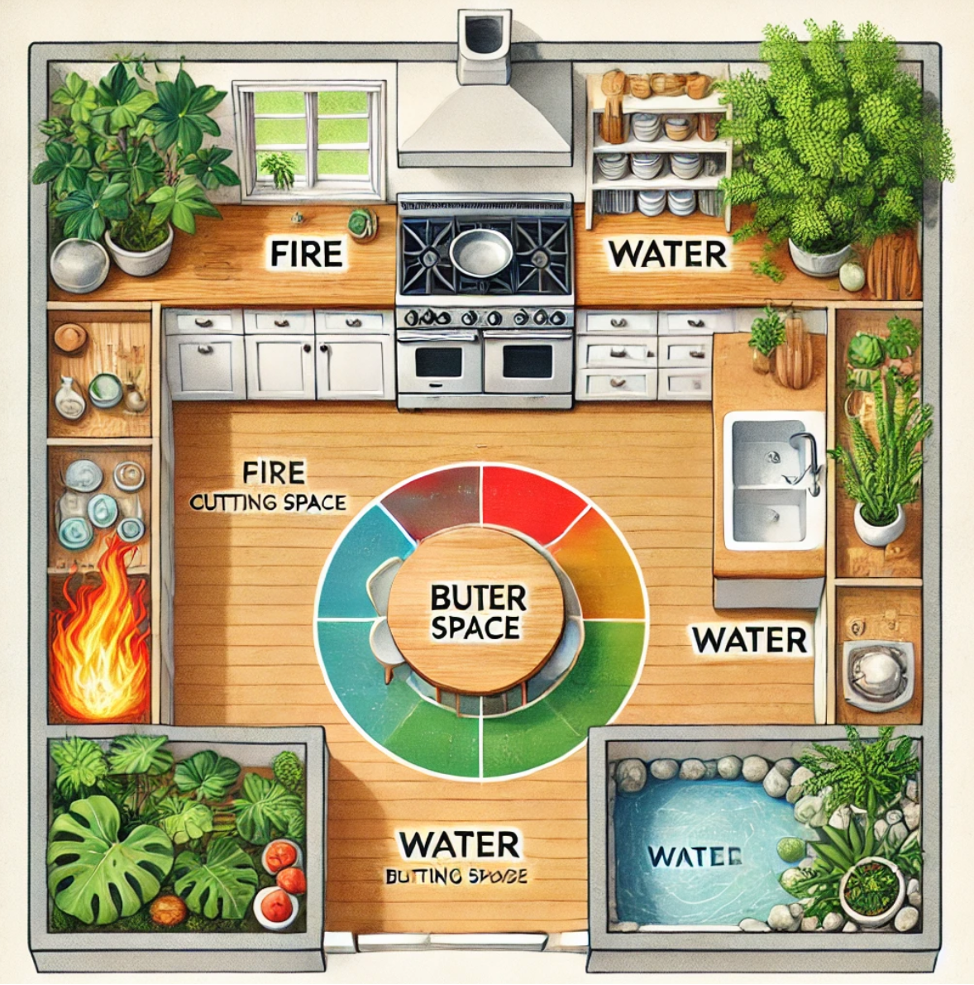
In a Feng Shui kitchen, balance between the elements is essential, especially when it comes to the relationship between fire (the stove) and water (the sink or refrigerator). These elements are naturally opposing, and if they are placed too close to each other or directly facing each other, it can create tension and disrupt the energy in the space.
To mitigate this, it’s important to place a buffer or balance between these elements. For example, adding a wooden cutting board or a plant between the stove and sink can harmonize the energy. Wood represents growth and can act as a mediator between fire and water.
Key Tips:
- Avoid positioning the stove and sink/refrigerator directly opposite each other.
- Use wooden elements to create balance between water and fire.
- Ensure that both the stove and sink are clean and functional to support health and prosperity.
3. Proper Lighting and Ventilation
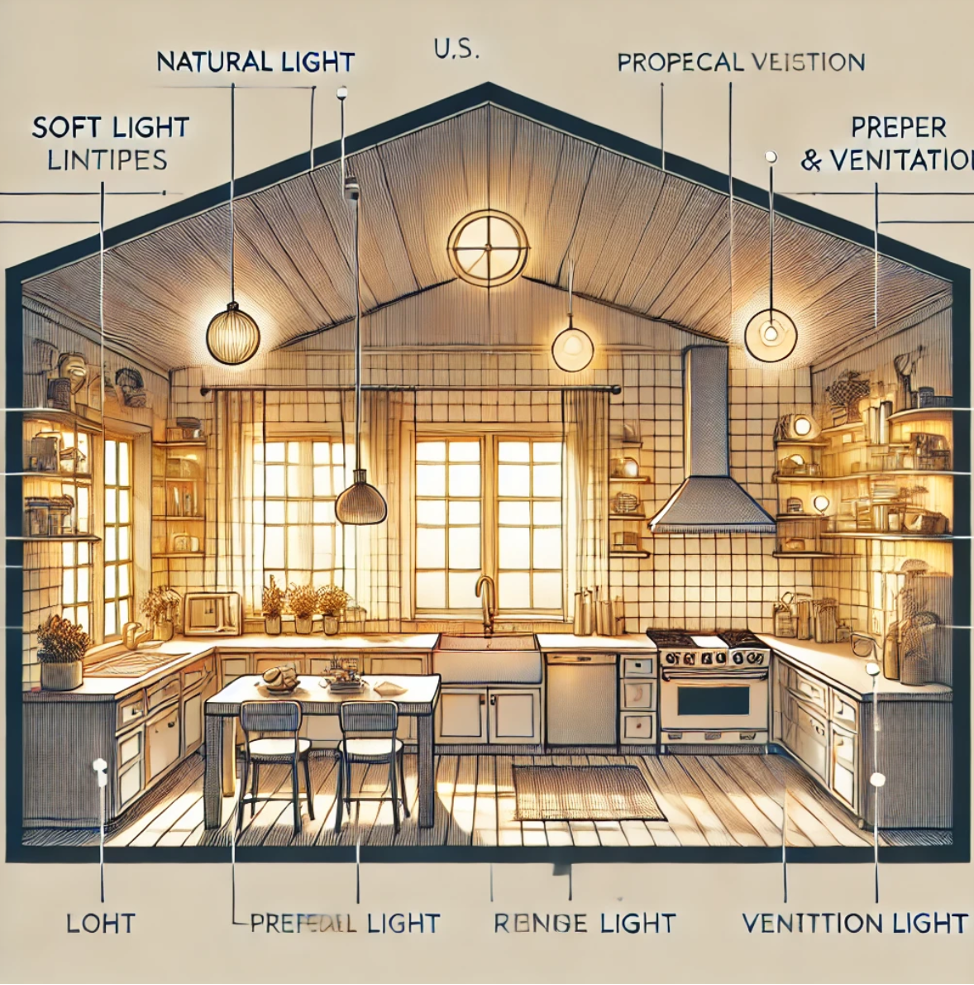
Good lighting and ventilation are critical for a Feng Shui kitchen, as they encourage the flow of Chi and promote vitality. A well-lit kitchen is important for preparing food safely and efficiently, while good ventilation ensures that the air remains fresh and free of any stagnant energy. Ideally, the kitchen should have windows that allow natural light and fresh air to circulate. If windows are limited, incorporating bright, full-spectrum lighting can help replicate natural light.
Additionally, avoid using overly harsh lighting such as fluorescent bulbs, as they can create stress and fatigue. Instead, opt for warm lighting that enhances the sense of comfort and harmony in the space.
Key Tips:
- Ensure the kitchen is well-lit with natural light or warm, full-spectrum lighting.
- Ventilate the kitchen regularly to maintain a fresh and vibrant energy.
- Use soft lighting during evening hours to promote relaxation and balance.
4. Organizing the Kitchen for Free Flow of Energy
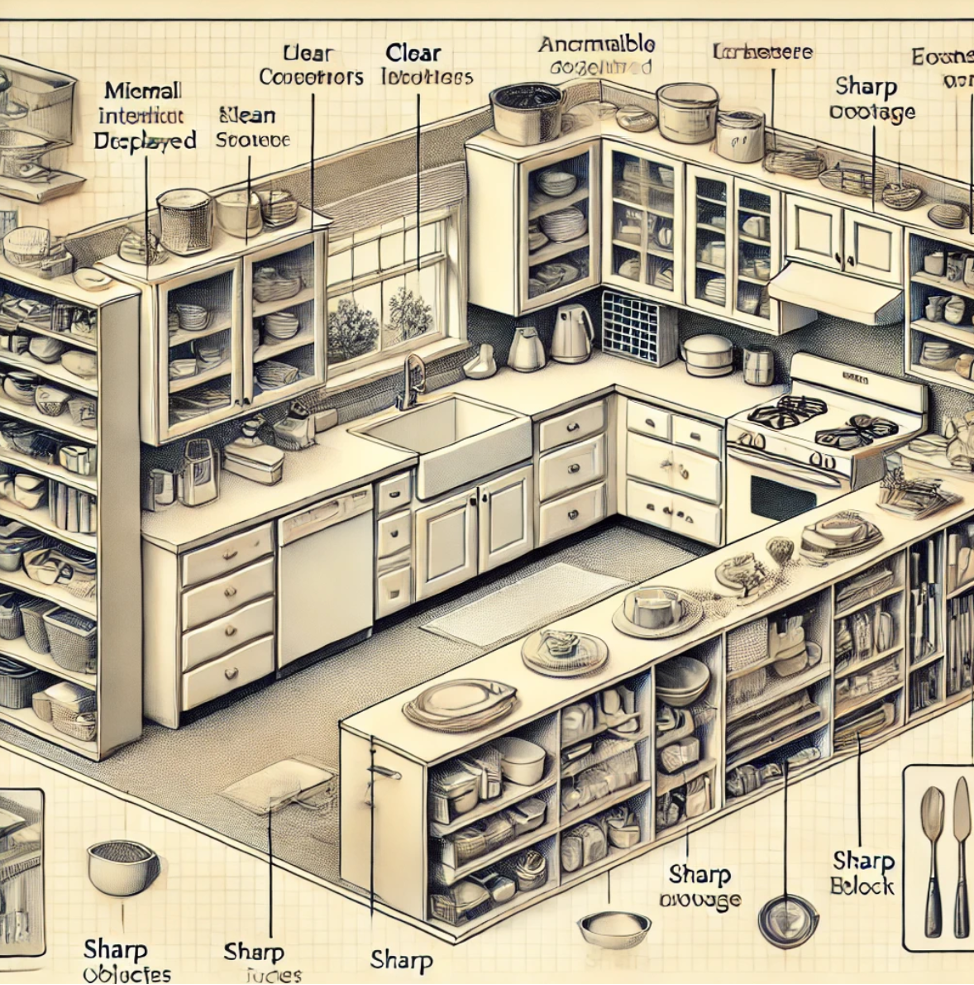
Clutter is a major obstacle to good Feng Shui, especially in the kitchen, where it can block the flow of positive energy and create stress. Keeping the kitchen organized, clean, and clutter-free will allow Chi to circulate smoothly and support health and well-being.
Use practical storage solutions such as cabinets, shelves, and organizers to store utensils, cookware, and food items. The countertops should be kept as clear as possible, with only the most essential items on display. Avoid storing knives out in the open, as their sharp energy can disrupt the flow of positive energy. Instead, keep them in drawers or covered knife blocks.
Key Tips:
- Keep the kitchen organized and clutter-free to allow energy to flow smoothly.
- Use storage solutions to minimize clutter on countertops.
- Store sharp objects like knives in drawers or covered blocks to prevent disruptive energy.
5. Choosing the Right Colors for Your Kitchen

In Feng Shui, colors are associated with different elements and can significantly influence the energy of a room. For kitchens, it’s important to choose colors that promote harmony, nourishment, and well-being. Here are some Feng Shui color recommendations for your kitchen:
- White: Represents clarity and cleanliness, making it an ideal color for kitchens.
- Yellow: A cheerful, vibrant color that promotes happiness and warmth. It’s perfect for creating a welcoming atmosphere.
- Green: Symbolizes growth and vitality. It can be introduced through plants or accent colors.
- Red: While red represents the fire element, use it sparingly in the kitchen to avoid creating too much heat. It can be used as an accent color but should not dominate the space.
Neutral tones such as beige, light gray, or soft pastels can also be effective in creating a balanced and calming environment in the kitchen.
Key Tips:
- Use white or neutral colors for a clean, organized look.
- Add warm tones like yellow to create a welcoming and cheerful space.
- Introduce green through plants or decor to promote vitality.
6. Incorporating Plants and Natural Elements
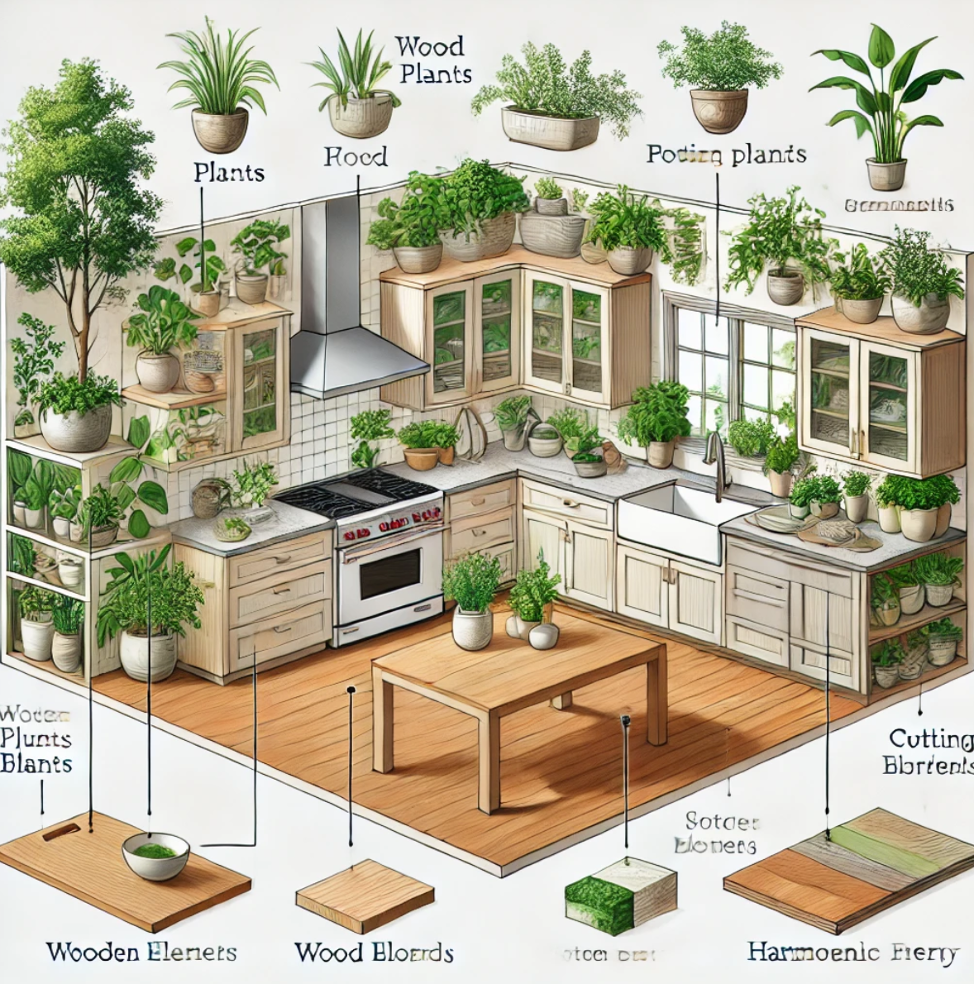
Plants are a wonderful addition to a Feng Shui kitchen as they bring in the Wood element, which represents growth and vitality. Indoor herbs, potted plants, or even small fruit trees can enhance the energy of the kitchen and improve air quality. However, it’s important to keep plants healthy and thriving, as dead or wilting plants can have the opposite effect and drain energy.
In addition to plants, incorporating natural materials like wood, stone, and ceramic can help ground the energy of the kitchen. Wooden cutting boards, stone countertops, or ceramic dishware are all excellent choices for creating a balanced, nature-inspired kitchen.
Key Tips:
- Add indoor plants or herbs to bring in the Wood element and promote growth.
- Choose natural materials like wood, stone, and ceramic for a grounded, balanced kitchen.
- Ensure plants are healthy and well-maintained to avoid draining energy.
7. The Importance of the Kitchen Door
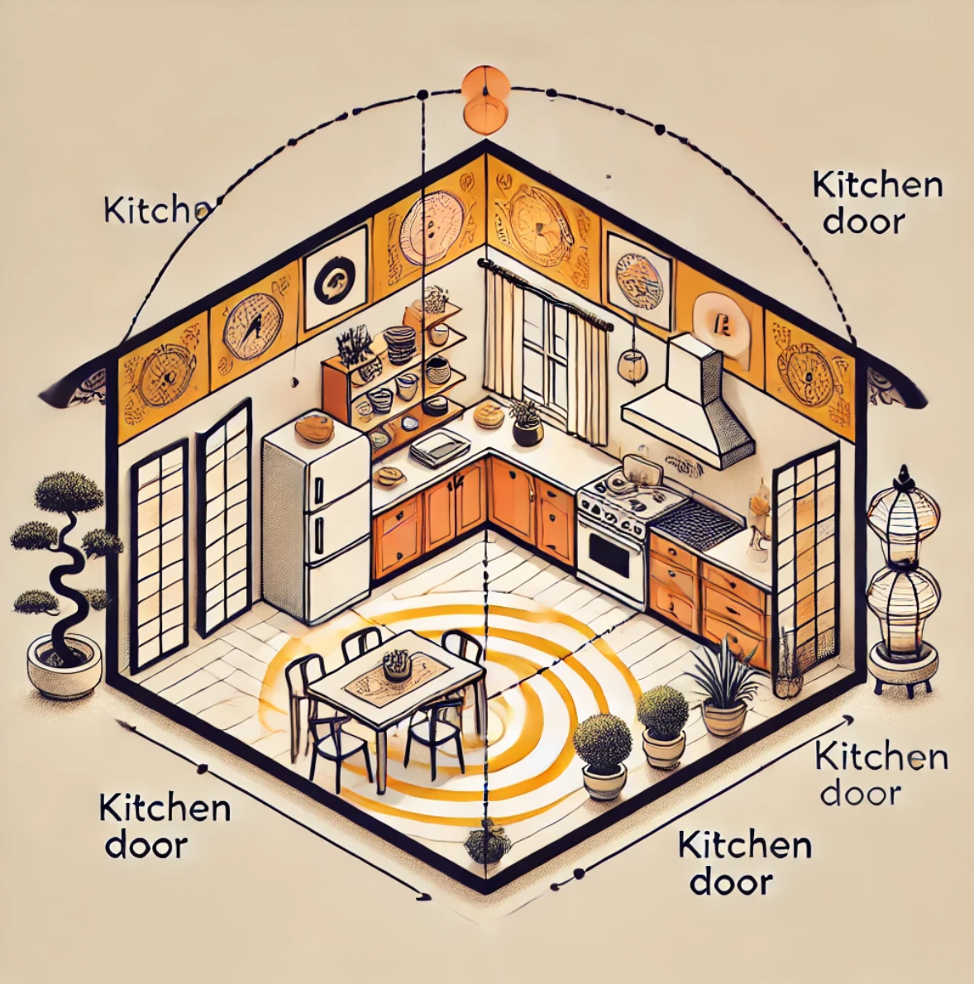
In Feng Shui, the placement and orientation of the kitchen door is significant because it affects the flow of Chi in and out of the kitchen. Ideally, the kitchen door should not be directly aligned with the main entrance or any other doors in the home, as this can cause energy to rush through the kitchen too quickly, leading to imbalance.
If the kitchen door is aligned with other doors or the main entrance, consider placing a decorative screen or curtain to soften the energy flow. You can also add plants or decorative items near the door to slow down the movement of energy and create a more grounded environment.
Key Tips:
- Avoid having the kitchen door aligned with the main entrance or other doors.
- Use screens, curtains, or plants to soften the flow of energy near the kitchen door.
- Ensure that the kitchen door opens smoothly and is free of obstructions to promote a balanced energy flow.
Conclusion
Creating a Feng Shui kitchen layout is about more than just aesthetics—it’s about creating a space that supports health, prosperity, and well-being for everyone in the household. By paying attention to the positioning of key elements, maintaining balance between fire and water, using the right colors and materials, and keeping the space organized, you can transform your kitchen into a harmonious and nourishing environment. Whether you’re cooking a meal for yourself or your family, the energy in a Feng Shui kitchen will support you in creating food that nourishes both body and soul.

